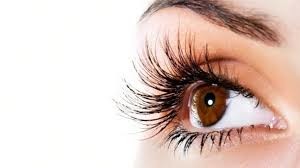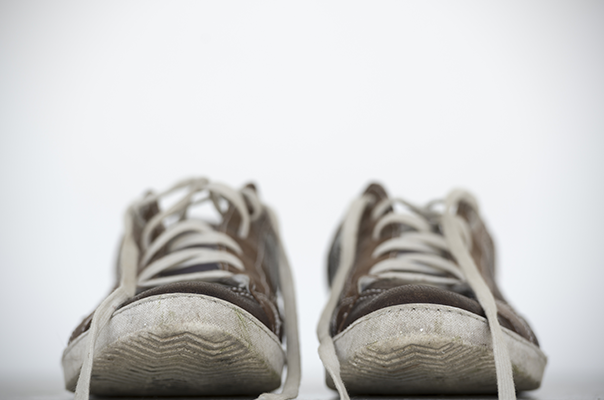People avoid touching the obviously dirty things—toilet bowls, garbage cans, anything in a public restroom. But for every well-known nasty, there are a host of under-the-radar threats we put in our mouths, roll around on all night, and regularly rub on our faces. In an effort to keep clean, happy, and healthy, here are 21 surprisingly dirty things and what to do about them.
Kitchen
Sponges
It’s easy for bacteria and food particles to get trapped in the crevasses of sponges, creating ideal conditions for bacteria to breed . Moist, dark—what else could bacteria ask for?!
What to do: Try antibacterial sponges and dish soaps to limit the lesser of bacteria evils—but neither are very effective at controlling the spread of big name baddies like E. Coli and Salmonella . Be extra safe by disinfecting sponges at least once a week by soaking in a bleach solution for 5 minutes, or microwaving on high for two minutes. (The microwave method has even been shown to kill 99 percent of bacteria !)
Kitchen Buttons, Knobs, and Handles
Taking something from the fridge, grabbing spices from the cabinet, preheating the oven, zapping something in the microwave—a lot goes into cooking a meal, including any bacteria from that raw chicken or unwashed produce.
What to do: To minimize the risk, some experts recommend using a disinfectant on any frequently used kitchen surfaces several times a day, especially before and after preparing a meal. Keep it carefree by keeping antibacterial wipes right on the counter for easy access.
Cutting Boards
With all the ingredients flying around that kitchen, it’s hard to keep designated cutting boards for each type of food. (Fresh veggies tossed on a board right after a raw steak probably isn’t such a good idea). But this hotbed for cross-contamination is essential to keep clean. Scientists debate whether wood or plastic makes for a better board: Plastic boards seem safer and easier to clean (because they’re not porous), but once they’re scored from repeated slicing, it’s hard to clean the microscopic grooves . Wood sucks bacteria down into its core, but researchers disagree about whether bacteria ever resurface; one study noted that heavily used wooden boards were more problematic than new ones.
What to do: Keep plastic boards clean by regularly running through the dishwasher (or washing with near-boiling water if the dishwasher isn’t an option). Consider microwaving wooden ones to get the bad guys out. (But be careful—some folks have managed to catch their cutting boards on fire.) Let both boards air-dry completely before storing to minimize potential bacteria growth. But since the research is really mixed, just be sure to replace heavily nicked boards regularly.
Drip Coffee Maker
Even though coffee itself has some antimicrobial properties, coffee makers still need to be cleaned . Most home coffee makers don’t get hot enough to kill anything growing in the wet, dark environment of the water reservoir or the machine’s internal piping.
What to do: Running a 50/50 mix of water and white vinegar through the machine once a month may help inhibit the growth of mold and some bacteria. Let half the mixture run through the machine, then switch it off for an hour before finishing the cycle. And don’t forget to deep-clean the carafe!
Bedroom
Pillows
Pillows aren’t just packed with feathers—turns out they can also be home to several types of allergy-inflaming fungi . (Ick.) And all those hours spent sweating, shedding skin, and drooling like a sheepdog also create ideal conditions for dust mites, another potential allergy trigger.
What to do: In addition to regularly laundering bedding (specific instructions below), anti-allergen covers can help protect pillows from outside germs getting in and keep the sneezy stuff (down, anyone?) inside .
Sheets
Take all the reasons to be worried about pillows and add sweat to the tune of up to one liter per night.
What to do: Washing and drying everything on the highest heat available is a good policy, but regular bleaching is a good idea, too. (In fact, studies suggest a good hot wash and dose of bleach will not only kill bacteria on the cloth, but also cleans out the machine so germs aren’t continuously spread around .)
Bathroom
Bath Mat
Bath mats sit there, soaked with shower water and pressed up against the floor, slowing evaporation and providing the dark, damp environment mold and bacteria love. Add to that the fact bathroom floors have been shown be one of the most contaminated parts of the bathroom (toilet bowl excluded, of course) and it’s obvious why we should put some brainpower towards that bath mat .
What to do: Launder mats once per week on the highest heat and with bleach (if possible—defer to the mat’s washing instructions, especially if it has rubber backing). And (clearly) keep separate from any bedding or clothes. Wooden mats may be an easier option, since surface disinfectants can replace regular laundering, but it’s important to remember to disinfect the floor to avoid re-infecting a clean mat.
Laundry Basket
All the grime from sweaty workout gear, underwear, and bedding sits in that laundry bag, soiling the hamper itself.
What to do: Try using one bag for dirty clothes, and one for the clean stuff, and wash the dirty bag along with the clothes! For hard plastic hampers, use any hard surface disinfectant, but be wary of anything with the potential to discolor (i.e. bleach).
Makeup and Makeup Brushes
People shouldn’t get diseases from getting dolled up, but cosmetics have been known to do just that ! Eye makeup seems to be the greatest cause for concern; one study found that within just three months of use, 40 percent of tested mascara tubes had some creepy crawlies growing in them .
What to do: A good rule of thumb is to replace eye makeup every season; toss lotions and liquid foundation every six months; and get fresh powder-based products, lipstick, and nail polish every two years.
Toothbrushes
Studies have found that flushing the toilet can spew bathroom-related bacteria into the air . (Ick!) Needless to say, it’s a good idea to store that toothbrush far away from the potential contaminants (and close that lid before flushing!).
What to do: The ADA suggests making sure to rinse toothbrushes thoroughly after use, allow them to dry completely, and replace every three to four months. And while they don’t deem sanitizing necessary, they do discourage sharing toothbrushes. That said, for those who were recently sick (or are sickened by the thought of germs) rinsing in a milk bleach solution is an effective disinfectant, as is running toothbrushes through the dishwasher . And while it may seem that antibacterial mouth rinses (like Listerine) could be a good alternative to bleach, one study found that it was only about as effective as allowing the brush to air dry, although there are other brands (specifically Crest-Pro Health) which worked better .
Towels
We shower to get clean, so it’d be silly to get dirty drying off. But reusing damp bath towels could be doing just that! Drying down after the shower doesn’t just get rid of the excess water—it takes with it dead skin cells and bacteria, too (including the dreaded staph infection).
What to do: The risks are low if towels are changed out about once a week and are allowed to dry completely between uses. While antimicrobial towels do exist, their efficacy and necessity are debatable—they could help cut down on smells, but that seems to make it easier to forget about cleaning them.
Contact Lenses
One study found that more than 80 percent of tested contact lens cases were contaminated with bacteria, regardless of the system used to clean (no-rub solution or hydrogen peroxide) . (And some suggest inadequate cleaning instructions are to blame! )
What to do: Star by wiping out contact lens cases after each use and replace it every month (or at least clean by soaking in near-boiling water for a few minutes). If using a fancy hydrogen peroxide cleansing case, just allow fresh solution to sit in the case for 24 hours before using .
On-the-Go
Headphones
Those little buds aren’t just at risk from what they pick up in the bottom of that gym bag—using them for just one hour has been shown to coat headphones with bacteria from the ear .
What to do: Using water with electronic accessories is tricky, but audiophiles can clean detachable rubber nubbins (technical term) by soaking them for 15 minutes in a vinegar and water solution and letting them sit for 10 more minutes in water before drying. For the un-detachable kind a gentle mixture of soap and water should be used on the plastic exterior, and a clean toothbrush can remove any lint from the grill.
Keys
Anyone who drives—or just plans on returning home at the end of the day—probably has a set in their pocket, but who thinks about keeping keys clean?
What to do: The fact that many keys are made of brass, a copper alloy, offers some protection because it’s naturally antibacterial . But occasionally scrubbing keys with plain ol’ soap or using a disinfectant probably won’t hurt, and at the very least shining them up offers some aesthetic benefits.
Handbags
A study of office workers found that women’s purses were one of top three dirtiest things they touched throughout the day. In fact, one (very small) study found E. Coli on 25 percent of purses tested (out of a 50 purse sample).
What to do: Common sense (don’t rest it on the bathroom floor) and regular cleaning are enough to minimize risk. Wipe leather purses with a disinfectant wipe every few days, and put washable ones through the laundry (or send to the dry cleaner) as often as once per week.
Phone
Studies have repeatedly cited mobile phones as risk factors for infection, and we largely have our own unwashed hands to blame . (One study found fecal bacteria on 1 in 6 phones!)
What to do: The clean up is simple: Power down the device once per week (more during cold and flu season) and wipe with a disinfectant cloth.
Yoga Mats
The idea of a communal mat is inherently gross. Who wants to roll around in somebody else’s sweat for an hour? Wrestlers have long dealt with outbreaks of ringworm, staph, and even herpes from similarly sweaty wrestling mats, and now some doctors are suggesting the new surge in cases of athlete’s foot and plantar warts is tied to the growing popularity of yoga .
What to do: Bringing a mat to yoga may be even more important because of all the nasty fungi and bacteria sweat expels from pores, but bringing a personal mat isn’t much better if it isn’t cared for properly (or if loaned to friends). To keep it clean, pick a side that will always face up and attempt to invest in a yoga towel to keep sweat off the mat itself. And a routine disinfectant wipe isn’t a bad idea, either. After every use make sure to hang mats up so both sides can dry completely, and periodically scrub mats with a tiny bit of dish soap and water.
Gym Bag
If it’s regularly being packed with sweaty shirts that have been exposed to all manner of germs from the gym, why don’t we wash it as often as the clothes themselves? And this may not just be a smelly misstep—some researchers believe dirty gym bags could be responsible for spreading infections.
What to do: Consider storing dirty clothes in a separate mesh pouches or a sealable plastic bag (just make sure not to forget and let it fester) for transporting. Empty and air out bag between uses to limit bacteria growth. But the bag itself is likely getting left on locker room floors, which are known to harbor infectious microbes, so give it a once-over with disinfectant and send through the wash on the hottest setting once per week.
Water Bottle
Staying hydrated and healthy seem to go hand in hand, but be wary—coliform bacteria (which E. coli falls under!) can coat the inside of reusable plastic bottles if they’re not cleaned carefully . In fact one study of students’ water bottles found they were so dirty that, had the water come from the tap, the government would have classified it as unfit to drink !
What to do: Choose a wide-mouthed bottle for easier cleaning and drying, and opt for a hard material that won’t get scratched during vigorous cleaning (like stainless steel). In addition to regular washing, soak in a bleach solution for two minutes once per week (and rinse and dry completely). And of course, remember to use metal or glass bottles, NOT plastic!
Shoes
Studies have found shoes can track significant amounts of bacteria indoors, infecting clean floors . Some research has found shoes to more specifically transport E. coli and bacteria that can cause pneumonia. And it’s no surprise — sidewalks certainty aren’t regularly disinfected!
What to do: There’s no perfect solution, but an easy fix one study suggests instituting a no-shoes policy inside the house .
Living Room
TV Remote
A hospital hygiene study found that the remote controls were three times dirtier than anything else in the room, while another study found that nearly half of the remotes tested positive for antibiotic-resistant staph .
What to do: Wipe down remote controls with a disinfectant – and especially if it’s been used by a sick person recently!
Stay Clean! And Stay Healthy.
From Greatist.com


















